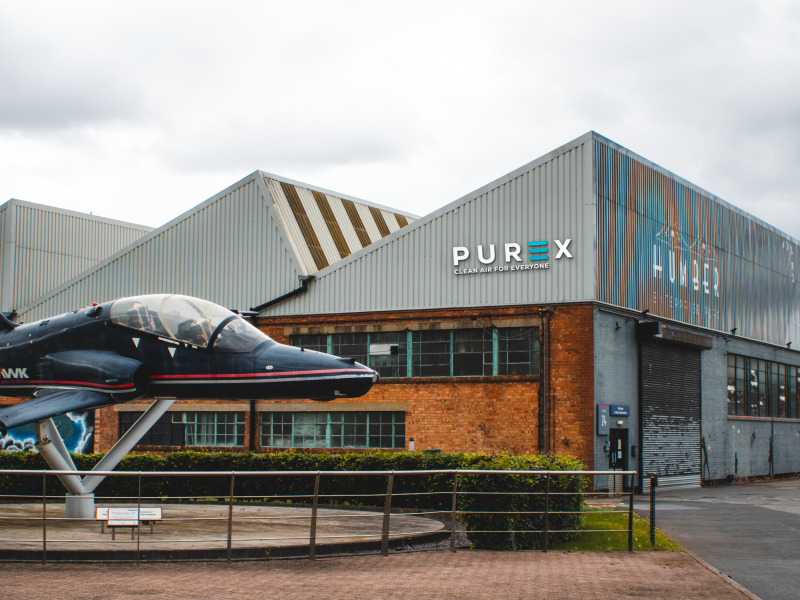
How To Maintain Your Fume Extraction System
Extraction systems are designed to remove airborne contaminants such as fumes, particles and odours from different environments. As the extraction unit works, the contaminants that have been extracted will eventually build up over time. Eventually, your unit will need maintenance to keep it running as it should. In this guide, we’ll explain the importance of fume extraction maintenance.
Why is it important to regularly maintain your fume extraction system?
It’s important to regularly maintain your fume extraction system for the following two reasons;
- Health and Safety – Systems that are not maintained regularly will not remove fumes adequately. This means that employees will be exposed to dangerous fumes.
- Compliance – In compliance with HSG258 set out by HSE, it is the employers’ responsibility to ensure controls are in place to reduce the risk of airborne contaminants. Failure to comply can result in exposing your workforce to dangerous contaminants and could even result in legal action.
Who can perform maintenance on a fume extraction system?
The maintenance of fume extraction systems must be performed by a competent person. A competent person is someone who has had sufficient training and experience or knowledge to identify hazards and authority to correct them.
How often should I perform maintenance on a fume extraction system?
The frequency that you will need to perform system maintenance will depend on the following factors;
- Type of contaminant – It’s important to consider what type of contaminant is being removed. Depending on how dangerous it is, you may need to increase the amount of safety and maintenance checks to reduce risk.
- Type of system – Different systems will require different levels of inspection. It’s best to consult your manufacturer’s guide to determine how often you need to inspect your system.
- Level of use – The level of use is another factor that can affect how frequently you should perform maintenance checks on your fume extraction system.
- Very heavy use e.g. 168hrs per week: Every three days
- Heavy use e.g. 120hrs per week: Every five days
- Medium use e.g. 60hrs per week: Every 10 days
- Light use e.g. 40 hrs per week: Every 2 months
- Very light use e.g. 15 hrs per week: Annual
It’s important to carry out the correct risk assessments to determine the best practice.
Top tips for fume extraction maintenance
When inspecting the fume extraction system for maintenance, we recommend making sure you are wearing the correct personal protective equipment, such as masks and gloves. If you’re unsure what PPE is required, check the chemical SDS sheet for guidance.
It’s important to also consider the following to stay safe and compliant.
When changing or cleaning the filter
- Ventilation – Make sure that compartments are cleaned in a well-ventilated room.
- Lifting safely – Make sure to take care when removing and fitting the filters and to follow the manual guidelines.
- Follow the manufacturer’s guide – Every filter purchased from Purex will include instructions on how to fit them – it’s important to follow these instructions fully.
- Disposing of filters – Your local council will have specific rules on how to dispose of any contaminants properly.
- Using the correct detergent – Mixing cleaning chemicals with contaminants can be dangerous – it’s important to check the SDS sheet to ensure you’re using the correct detergent to clean the inside of the filter compartment.
- Vacuum with a HEPA filter – If you’re using a vacuum to clean inside the filter compartment, make sure it has a HEPA filter to avoid contaminants from entering the workplace.
When checking the pipework
- Check the pipework for faults – Check the pipework for any splits, holes or kinks which can cause a fluctuation in the airflow.
- Check pipework is connected firmly – Ensure pipework is connected to the extraction ports, hoods, enclosures and the extraction inlet of your extractor.
- Check inside the pipework – Inspecting the inside of the pipework will allow you to visibly see if there is any build-up inside.
When checking the system
- Checking valves and dampers – If you have valves and dampers fitted, ensure that they are set firm and are not loose.
- Clean internal elements – Inspect and clean any extraction slots, mesh, down draft beds, or extraction ports to reduce build-up according to your manufacturers’ guidelines.
- Checking soldering tip systems – Soldering tip systems need to be inspected and cleaned as they are prone to build up at the end of the tip and on the internal walls.If the build-up is solid, soak in a solvent in a well-ventilated area or under an extraction hood for at least 8 hrs and clean internally.
- Checking silicone elements – Inspect the silicone hose that leads to the extraction tip to ensure there is no build-up or blockages.
No matter what type of maintenance is carried out, it’ll need to be logged correctly. If you are changing the filter, it will need to be logged in the filter life and changes chart supplied by the manufacturer. You should also keep an LEV service and housekeeping book to record the system performance and identify any issues.
According to COSHH, your LEV system requires a full service at least every 14 months. Here at Purex, we offer LEV testing on any LEV equipment. To get a quote contact our helpful team today. Looking for a fume extraction system for your business? Enquire now for more information.
Latest insights
-

How Fume Extraction Improves Workplace Health and Safety
If you’ve ever worked in an industrial environment, you know that the highest priority is health and safety. ... Read more -

Purex International Creates 7 New Jobs in Brough – Including Apprenticeships for Local Talent
Brough, East Yorkshire – Purex International is proud to announce 5 brand new full-time job openings and 2 apprenticeship roles at our manufactu... Read more -

A Day in the Life at Purex: How Every Team Drives Our Customer-First Approach
At Purex, everything we do is shaped around the customer, from the way we start each morning to how we wrap up the day. Our 40-year mission to deliver... Read more
How Purex can help
We provide an excellent level of service and support, including our 24-hour technical support service and start-to-end projects. Get in touch with our expert team today to find out more.